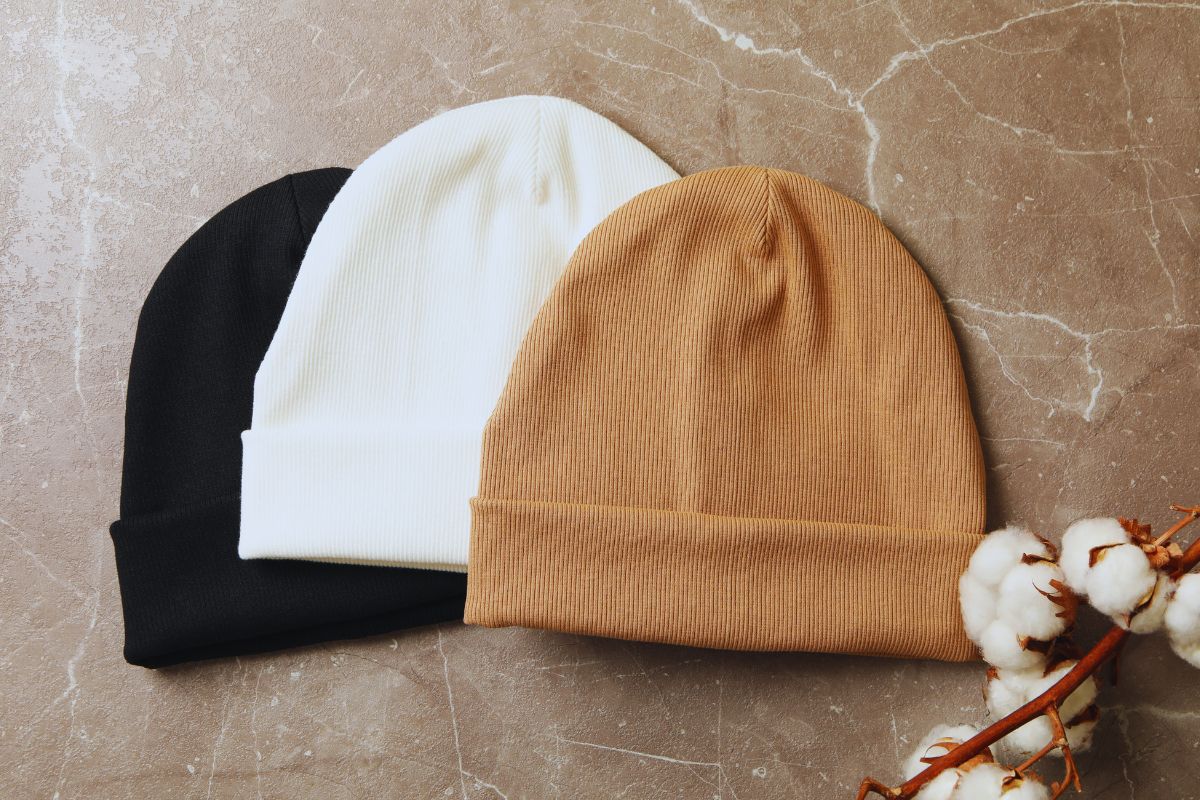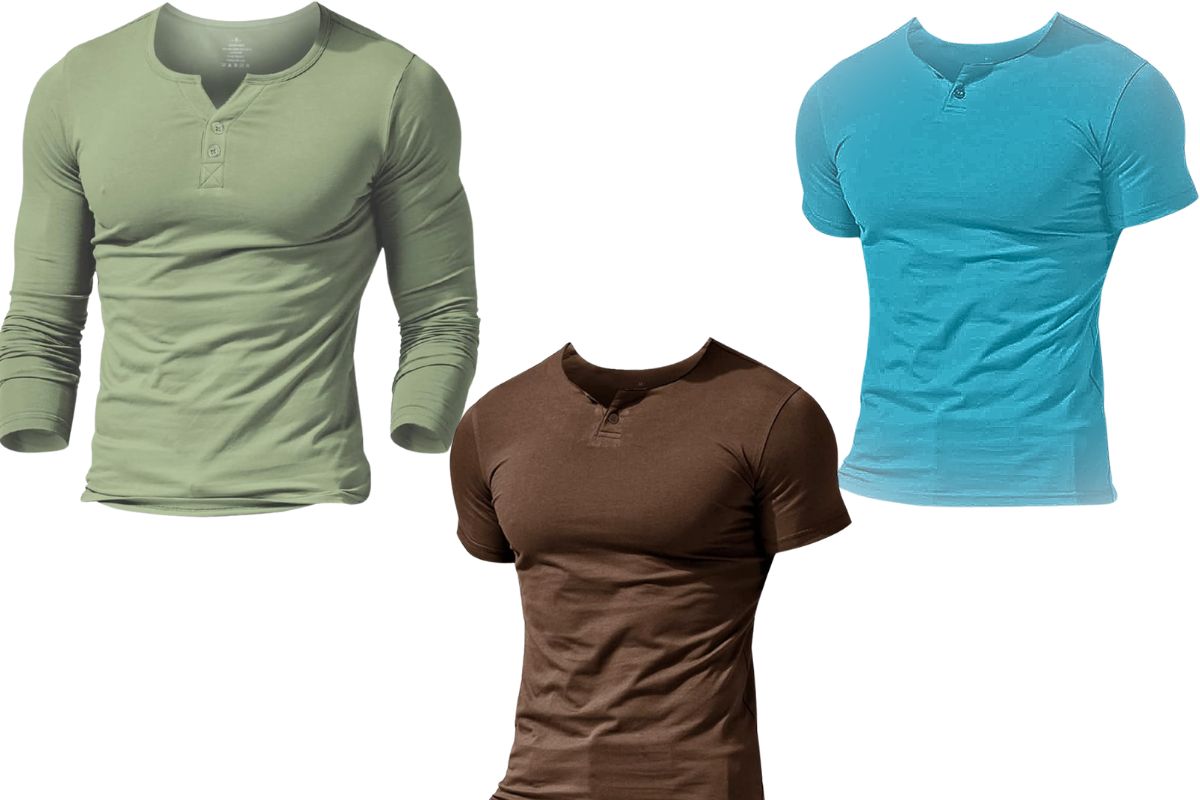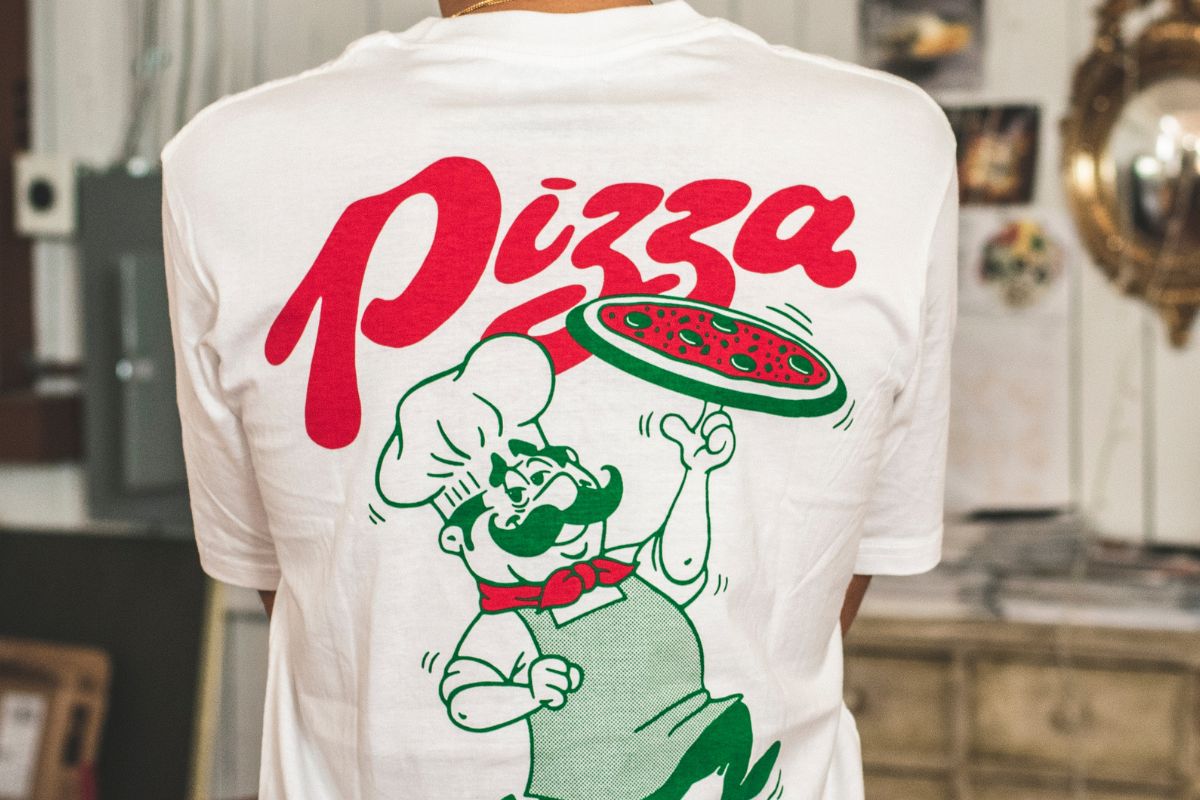Beanies have become a staple in both fashion and practical wear, evolving to suit a diverse range of styles and needs. You may already be familiar with the classic snug-fitted piece of headwear, intended to provide warmth and comfort during chilly weather. However, the variety of beanie types now available can complement your look, accentuate your style personality, or even serve as a functional accessory for outdoor activities.
From the sleek cuffed beanie that offers a timeless look to the slouch type that exudes a more relaxed vibe, each style caters to different preferences and occasions. The cuffed beanie is particularly versatile for its ability to adjust in terms of warmth and fit, while the slouch beanie’s laid-back appearance makes it a favorite among those aiming for a more casual ensemble. Moreover, specialized variations like brimmed beanies or those with earflaps enhance functionality; brimmed beanies shield your eyes from the sun, and designs with earflaps provide additional protection against the cold.
Your choice of beanie can be about more than just keeping warm; it’s an extension of your personal taste. With options that range from simple, cuffless types to more intricate ones with patterns and pom-poms, you have the ability to select a beanie that not only suits the weather but also aligns with your wardrobe. Selecting the right beanie is about understanding the different types available and how they can fit into your lifestyle.
History and Evolution of Beanies
Your understanding of beanies becomes more profound when you explore their historical roots and their transformation over time within the realms of culture and fashion.
Origins and Cultural Significance
Beanies began as practical forms of headwear, crafted from wool or cotton, that served to provide warmth in cold climates. These knit caps, with their snug fit, were initially connected to laborers and seafarers who valued both their warmth and convenience.
- Historical Background: The term “beanie” might relate to the slang word “bean,” referring to the head in the early 20th century. There’s also speculation that the name evolved from medieval academic hats, suggesting a degree of intellectuality and study.
- Cultural Impact: Throughout the mid-1900s, beanies took on cultural significance as symbols of unity among athletes and college students. Your understanding of beanies must include their role in the counterculture movements of the 1960s and 1970s, where they became associated with nonconformity and freedom of expression.
Evolution in Fashion
As beanies weaved their way into contemporary fashion, they transitioned from purely utilitarian articles to essential pieces in your winter wardrobe. The adaptability of knit fabric allowed for various patterns, enabling beanies to become a canvas for fashion expression.
- Material Use: While traditional beanies were knit from wool, modern ones incorporate a diverse array of materials, including synthetic fibers, offering you a broad spectrum of textures and styles.
- Fashion Trends: Fashion has embraced beanies, integrating them with both casual and high-end apparel. They have risen from their practical origins to become a statement piece that can complete your outfit, revealing their chameleon-like nature to adapt to different tastes and styles.
Types of Beanies and Their Characteristics
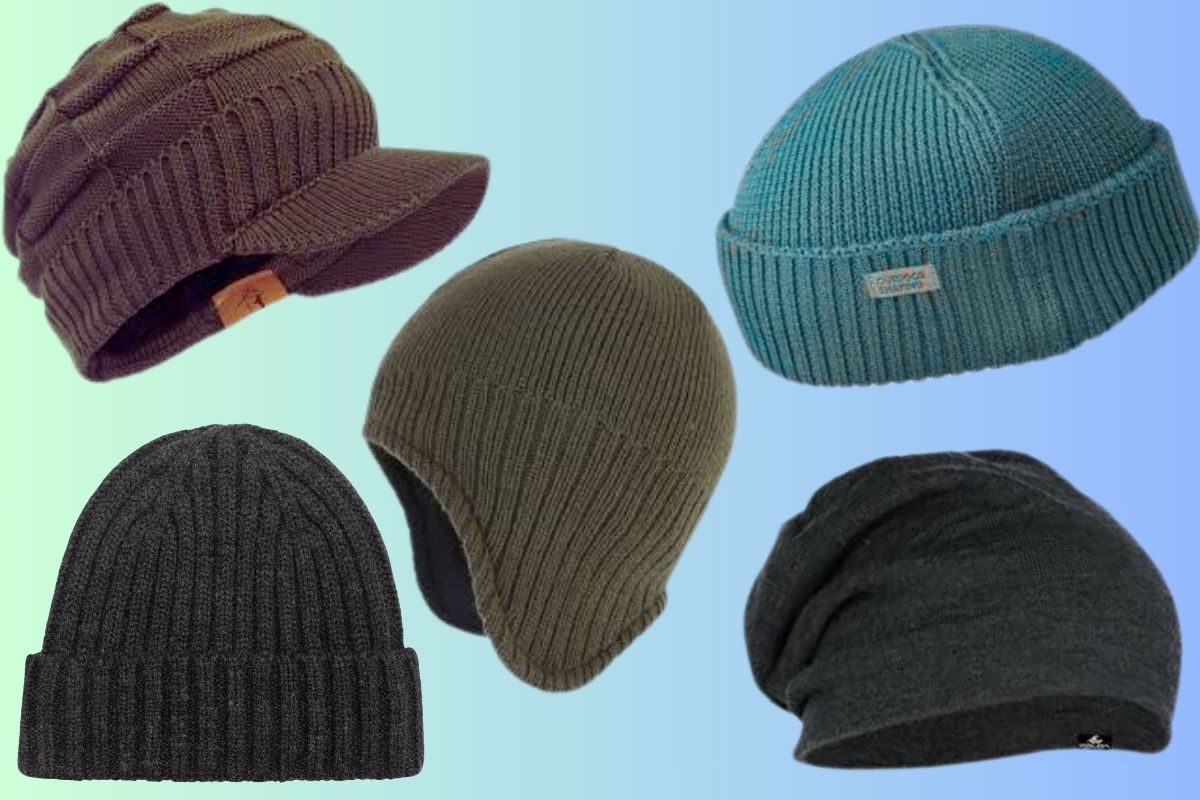
Beanies come in various styles, each with unique characteristics that cater to different preferences and needs in fashion and functionality.
Cuffed Beanie
The Cuffed Beanie is a classic style characterized by a fold at the bottom. The cuff can be adjusted for a tighter fit, offering versatility in how you wear it. This type is commonly knitted, providing warmth and comfort for both men and women.
Slouchy Beanie
Slouchy Beanies present a more relaxed fit than traditional beanies, with extra material at the back allowing for a droopy effect. This style is fashionable among those looking for a laid-back yet stylish look.
Fisherman Beanie
A Fisherman Beanie, also known as a watch cap or skullcap, sits snugly on your head and typically features a shorter cuff. It’s inspired by the practical headwear favored by fishermen and is designed for warmth without excess bulk.
Earflap Beanie
For cold weather, an Earflap Beanie offers significant protection with its distinctive flaps that cover your ears. It often comes with ties or pom-poms, making it a functional and whimsical choice to guard against the wind.
Visor Beanie
Combining fashion and function, the Visor Beanie includes a stiff brim or visor at the front to shield your forehead from the sun and elements. It’s a fusion of cap and beanie, suitable for various outdoor activities.
Cuffless Beanie
A straightforward and sleek option, the Cuffless Beanie has no fold at the edge, providing a seamless look that sits close to the head. This type is often referred to as a skull beanie and is a common choice for its simplicity.
Bobble Beanie
The Bobble Beanie, or pom-pom beanie, is recognized by the playful ball attached to the top. It’s a style that has crossed over from children’s fashion into adult wear for a fun, youthful vibe.
Material and Construction of Beanies
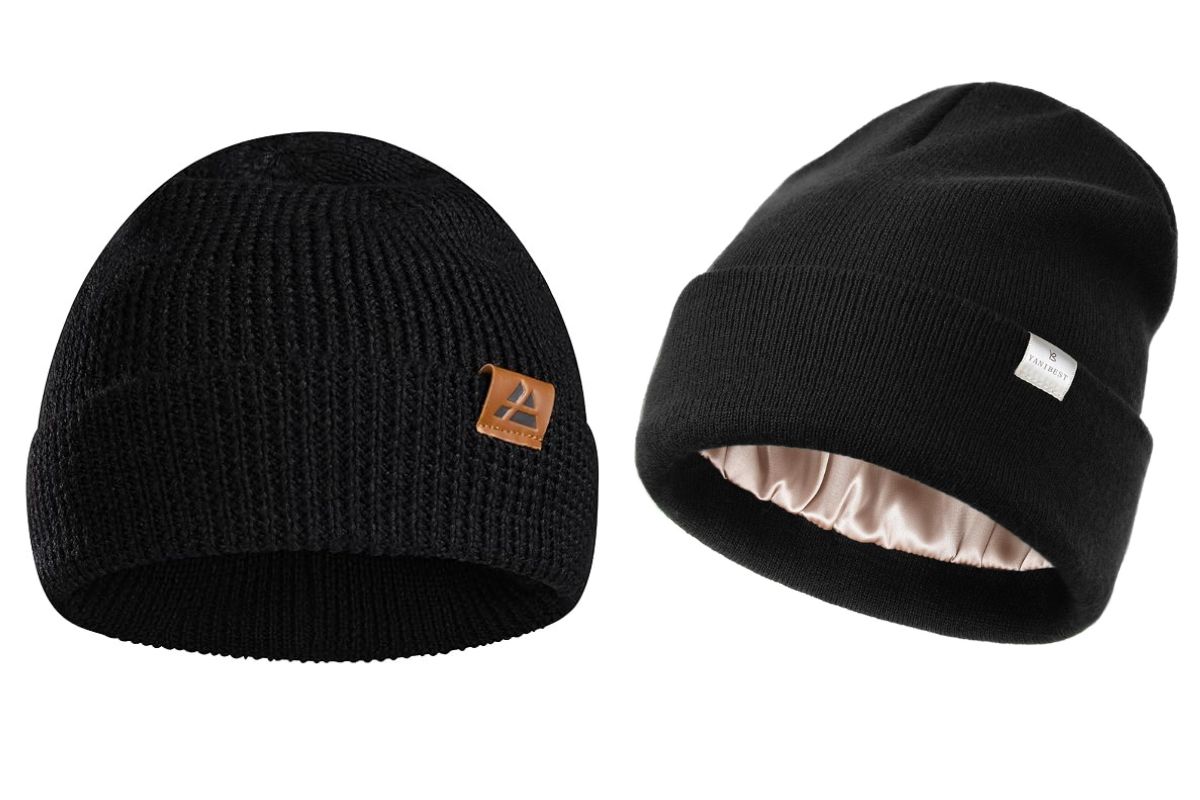
When selecting a beanie, the materials and construction techniques greatly influence its comfort, warmth, and durability.
Common Fabrics and Fibers
Wool: You’ll find that wool beanies offer excellent warmth and breathability. The fiber can absorb moisture, which helps maintain heat even when damp. Cashmere, a type of wool, provides a softer, lighter feel often associated with luxury products.
Cotton: Another popular choice, cotton, is soft and hypoallergenic, making it suitable for sensitive skin. However, it doesn’t insulate as well when wet compared to wool.
Acrylic: If you’re looking for a more affordable option, acrylic beanies are widely available. They mimic wool’s look and feel, though they may not offer the same level of warmth or breathability. Acrylic is also known for its resistance to fading and staining.
Acrylic Blend: Combining acrylic with natural fibers like wool can improve the warmth of the beanie and allow for a more flexible fit.
- Natural fibers like wool provide better insulation and are typically more breathable.
- Synthetic fibers such as acrylic are durable and often more color fast.
Knitting Patterns and Techniques
- Knit: The most common knitting style for beanies, ensuring stretch and comfort.
- Ribbed: A technique that creates vertical patterns for a snug fit and aesthetic appeal.
Knitting patterns contribute to the beanie’s elasticity and overall aesthetic. For instance, a ribbed pattern not only adds texture but also allows for more stretch, which can accommodate a range of head sizes.
Benefits of Natural Versus Synthetic Fibers
- Natural fibers, including wool and cashmere, are prized for their ability to regulate temperature and offer superior warmth. They’re suitable for cold climates and provide a level of comfort that adjusts to your body heat.
- Synthetic fibers, such as acrylic, often stand out in terms of easy maintenance and durability. For those looking for a practical, long-lasting option, these might serve well, especially in less harsh weather conditions.
Fibers like wool tend to be naturally more water-resistant and warmer than cotton or synthetic fibers. However, beanies made with synthetic fibers like acrylic blends can be more affordable and easier to care for, making them a popular choice for everyday wear.
Functionality and Comfort
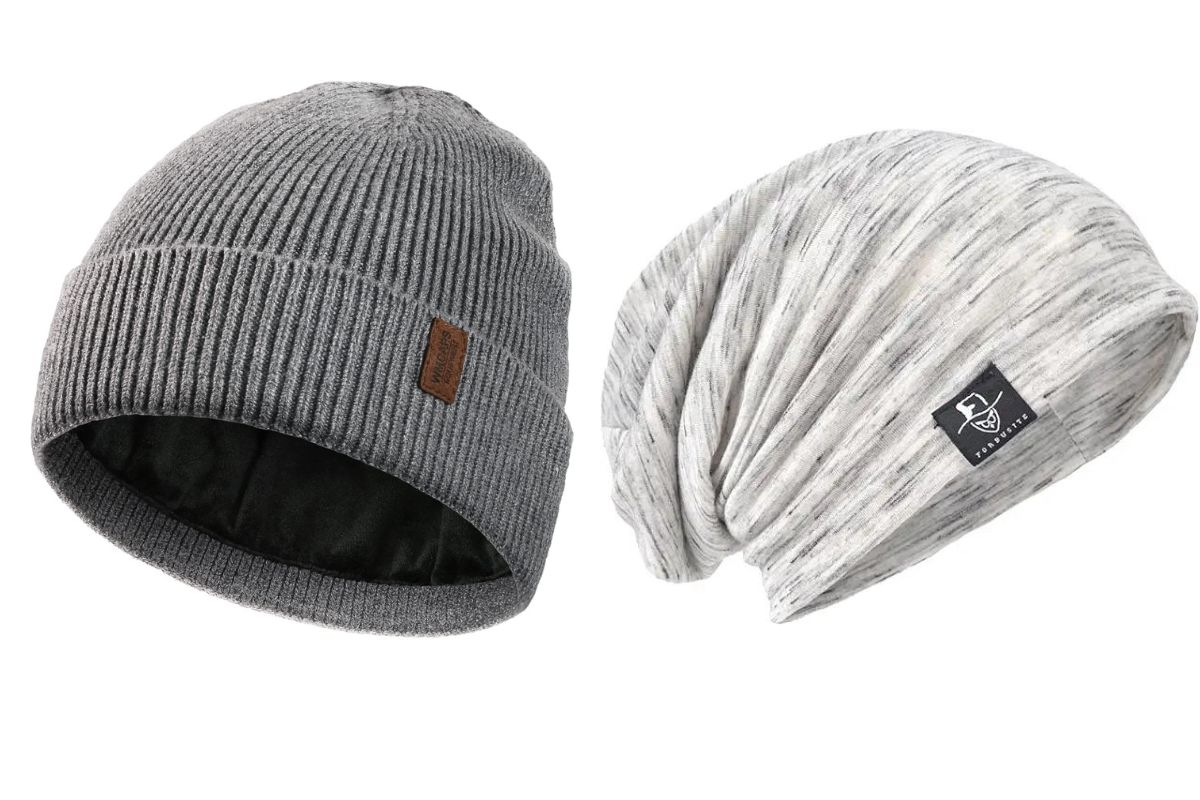
Beanies are more than just a fashion statement; they are critical for comfort and functionality throughout the seasons. Various design features also cater to different comfort needs, making the beanie a versatile accessory in your wardrobe.
Seasonal Use
Cold Weather: During winter, beanies serve as a fundamental layer of warmth, keeping your head insulated against frigid temperatures. In summer, a lightweight beanie can protect your head from the sun without causing overheating.
- Winter: Choose thicker materials for insulation.
- Summer: Opt for lighter, breathable fabrics.
Protection Against the Elements
Snow and Wind: Your beanie should be capable of withstanding snow and wind. Look for options with a tight weave or water-resistant materials to provide a barrier against moisture.
- Ears: Extended designs that cover your ears are essential for added protection.
Age and Sensitive Skin: If you have sensitive skin or are shopping for different age groups, consider hypoallergenic materials to prevent irritation.
Design Features for Enhanced Comfort
To ensure your beanie is comfortable:
- Opt for soft fabrics like fleece or cotton for a gentle touch, especially if you have sensitive skin.
- Adjustable cuffs can accommodate various head sizes and shapes.
- Look for non-constrictive fits that provide warmth without being too tight.
Remember that the versatility of a beanie hinges on its ability to adapt to various conditions and use cases while maintaining comfort.
Fashion and Style
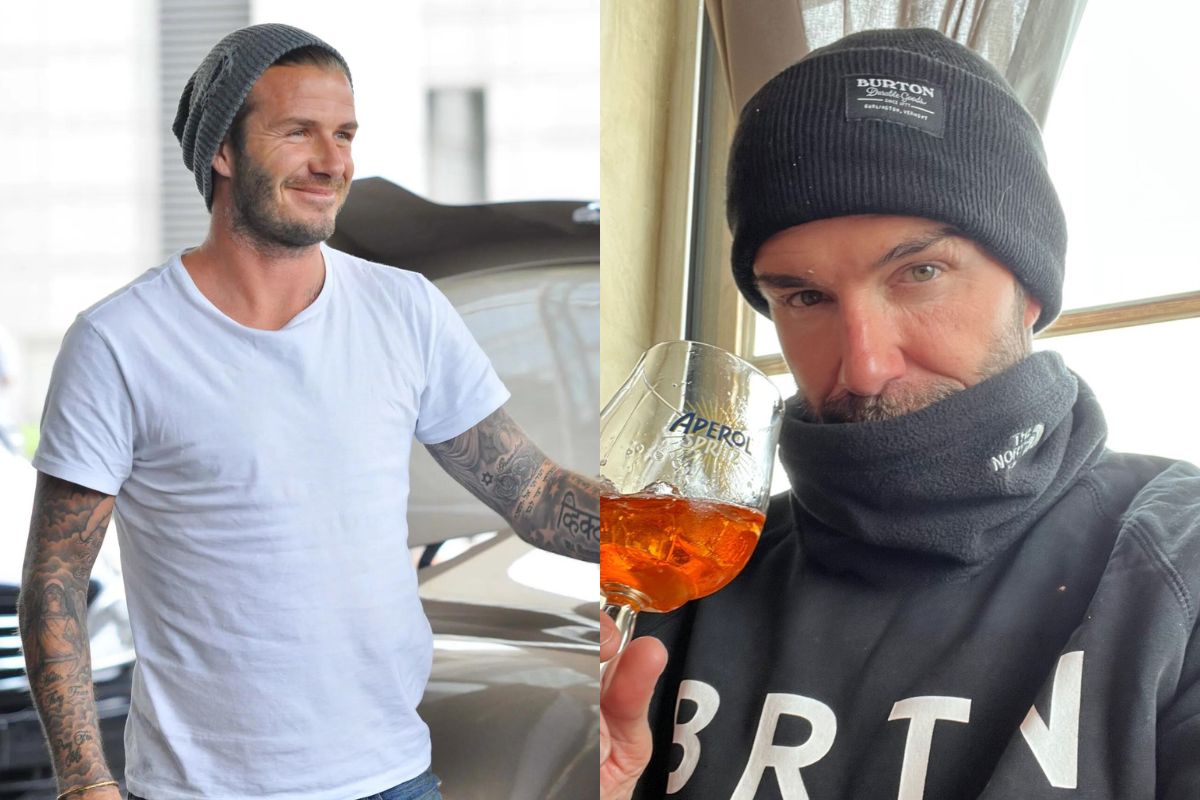
Beanies have transcended their practical use, becoming integral to fashion and personal style. You’ll find a variety of colors and designs, accommodating both gender preferences and individual tastes, from the minimalist to the bold statement-maker.
Influence on Contemporary Fashion
Beanies have made a substantial impact on contemporary fashion, often reflecting a blend of comfort and style. Designs vary from the classic cuffed beanie to slouchier options, and colors range from subdued earth tones to vibrant hues that punctuate an outfit. Whether incorporated into streetwear ensembles or high-fashion looks, beanies offer a stylish method to combat the cold while maintaining a fashionable edge.
Accessorizing with Beanies
In your quest to accessorize effectively:
- Bold Colors: Select a beanie in a bold color to add a pop to a neutral outfit.
- Embroidered Logos: A beanie with an embroidered logo can serve as a nod to your favorite brand or make a subtle style statement.
- Texture: Consider textured knits for added visual interest.
Remember, the right beanie choice adds a layer of stylish complexity to your attire.
Celebrity and Influencer Impact
Celebrities like David Beckham have influenced beanie trends, often observed wearing them both on and off the sports field. Their choices—be it a beanie with a simple design or one embellished with an embroidered logo—prompt fans and fashion enthusiasts to emulate these style statements. Influencers also play a crucial role, showcasing how beanies can be both a fashionable and functional component to a well-thought-out outfit.
Beanie Care and Maintenance
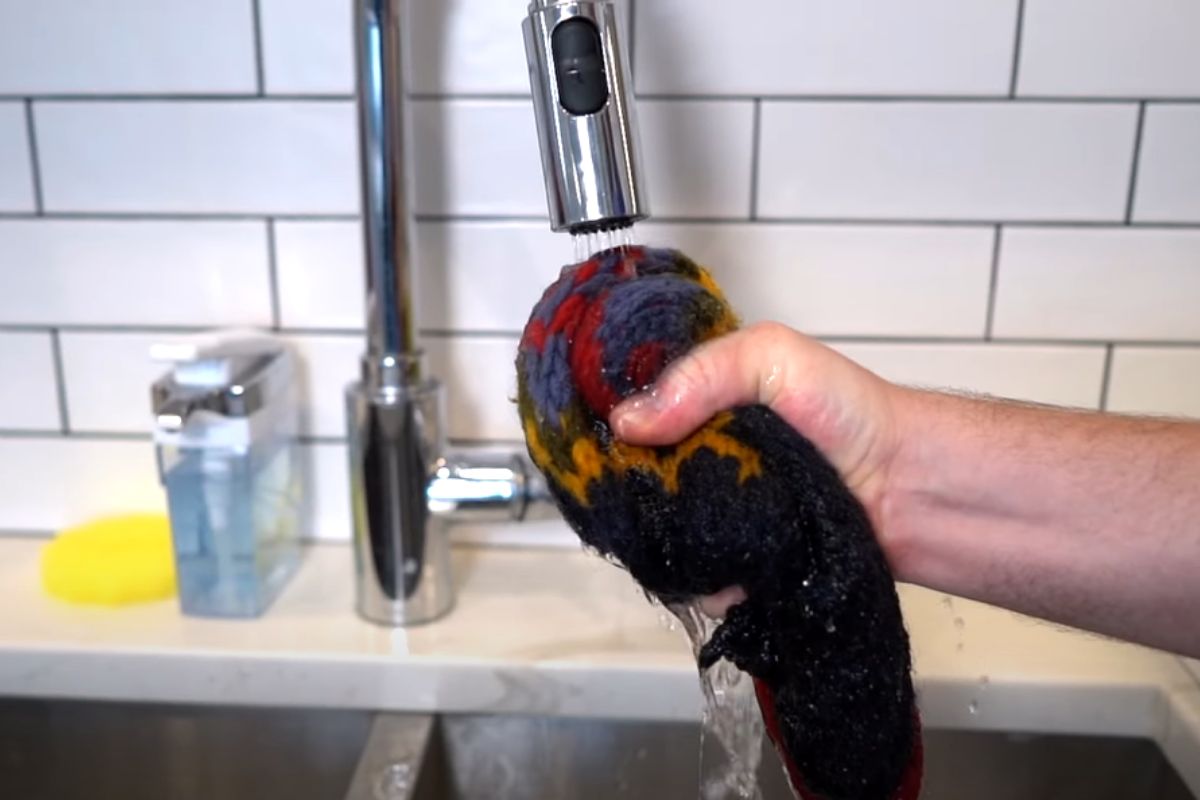
Caring for your beanie is crucial to maintain its appearance and longevity, whether it’s made of wool, cotton, or acrylic. Follow these tips to ensure your hat stays in top condition.
Washing: Depending on the material, your beanie’s cleaning method will vary:
- Wool and Cotton: It’s to hand-wash using cool or lukewarm water mixed with a mild detergent. Soak for about 10-15 minutes, then rinse well.
- Acrylic: These can often be machine-washed on a gentle cycle. Check the label for specific instructions.
Avoid twisting or wringing out any beanie to prevent misshaping.
Drying: Lay your beanie flat on a clean towel to absorb excess water. Gently reshape it and allow it to air dry on a flat surface. Never use a dryer unless the care instructions specifically allow it.
Storing: Keep your beanie in a cool, dry place. If it’s not in season, consider using a garment bag for protection against dust.
| Material | Wash Method | Drying Method | Additional Tips |
| Wool | Hand-wash | Flat dry | No wringing |
| Cotton | Hand-wash | Flat dry | Reshape when damp |
| Acrylic | Machine washable (if label permits) | Flat dry | Gentle cycle for washing |
Remember, proper care and maintenance will not only keep your beanie clean but also help it hold shape and remain comfortable for seasons to come.
Choosing the Right Beanie
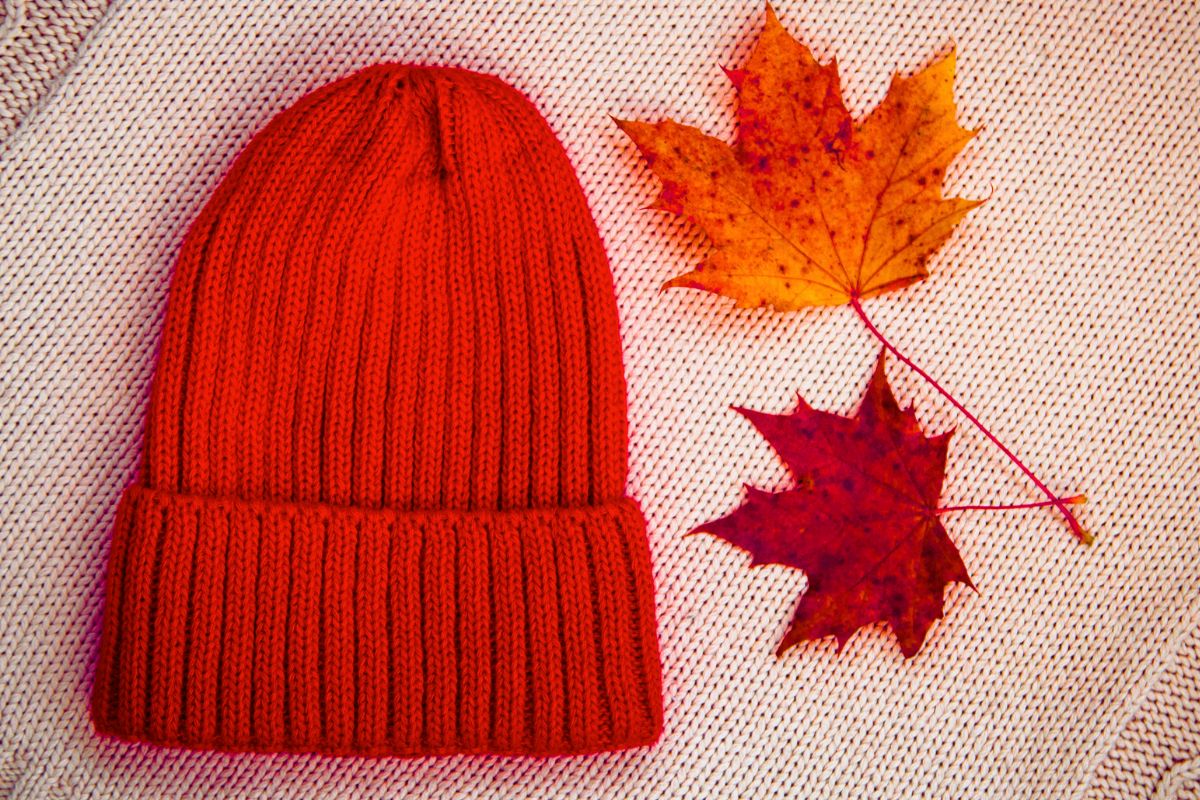
Selecting a beanie that complements your style and meets your needs is a matter of considering fit, material, and aesthetics. This ensures both comfort and sartorial success, whether you’re a man, woman, or seeking a unisex option suitable for children or adults of all ages.
Fit and Size Considerations
When you choose a beanie, the fit should be snug enough to stay in place without being too tight. A cuffed beanie offers flexibility, as you can adjust the cuff to cover your ears as needed. For a more relaxed feel, a slouch beanie provides extra material at the back for a laid-back look. On the other hand, earflap beanies provide additional warmth and coverage.
Selecting the Appropriate Material
Beanies come in a variety of materials, each with its own benefits:
- Wool: Warm and durable, ideal for colder climates.
- Cotton: Breathable, a good choice for transitional weather.
- Synthetic fabrics (e.g., acrylic, polyester): Often less expensive, easier to wash, and hypoallergenic.
- Blended fabrics: Combine the benefits of different materials, can offer improved stretch or moisture-wicking properties.
Your choice should be influenced by the climate you live in and any personal sensitivities to specific fabrics.
Color and Pattern Choices
Color and pattern are key factors in the aesthetic appeal of a beanie. Consider these options:
| Solid Colors | Patterned Designs |
| Classic Black | Striped |
| Earthy Brown | Geometric |
| Bold Red | Fair Isle |
| Soft Pastels | Abstract |
Select a beanie in a hue that complements your skin tone and wardrobe. For a versatile choice, solid colors tend to be easier to match, while patterns can showcase your personal style and make a statement.
Frequently Asked Questions
In this section, you’ll find concise answers to common inquiries about the nuances distinguishing various beanie styles, knit patterns, and design classifications.
What distinguishes a fisherman beanie from other styles?
A fisherman beanie is typically shorter and designed to fit snugly on your head. It is often cuffed and worn above the ears, reflecting a style inspired by the practical headwear of seafarers.
How do skull cap beanies differ from slouch beanies?
Skull cap beanies offer a tight, form-fitting look that hugs the contour of your head, whereas slouch beanies have a looser fit and extended fabric that allows them to droop casually for a relaxed silhouette.
What defines a cuffed beanie, and when is it typically worn?
A cuffed beanie features a fold at the bottom that can be adjusted for fit and warmth. It’s versatile, often worn in colder weather due to the extra layer of fabric over the ears.
Can you explain the different types of knit patterns used in beanies?
Beanies come in a variety of knit patterns such as ribbed, cable, and waffle knits. Ribbed knits provide elastic stretch and fit, cable knits offer a textured, decorative look, and waffle knits have a distinct grid-like pattern that combines style with breathability.
What is the name for shorter-style beanies meant for a close fit?
Shorter-style beanies meant for a close fit are commonly known as skull caps. They are designed to provide a sleek appearance without extra material at the top or sides.
How are beanies categorized based on their construction and design?
Beanies are categorized by their shape, such as cuffed, uncuffed, slouch, or fisherman, and by design details like earflaps or brims. The knitting technique used also plays a role, affecting the texture and stretch of the beanie.

